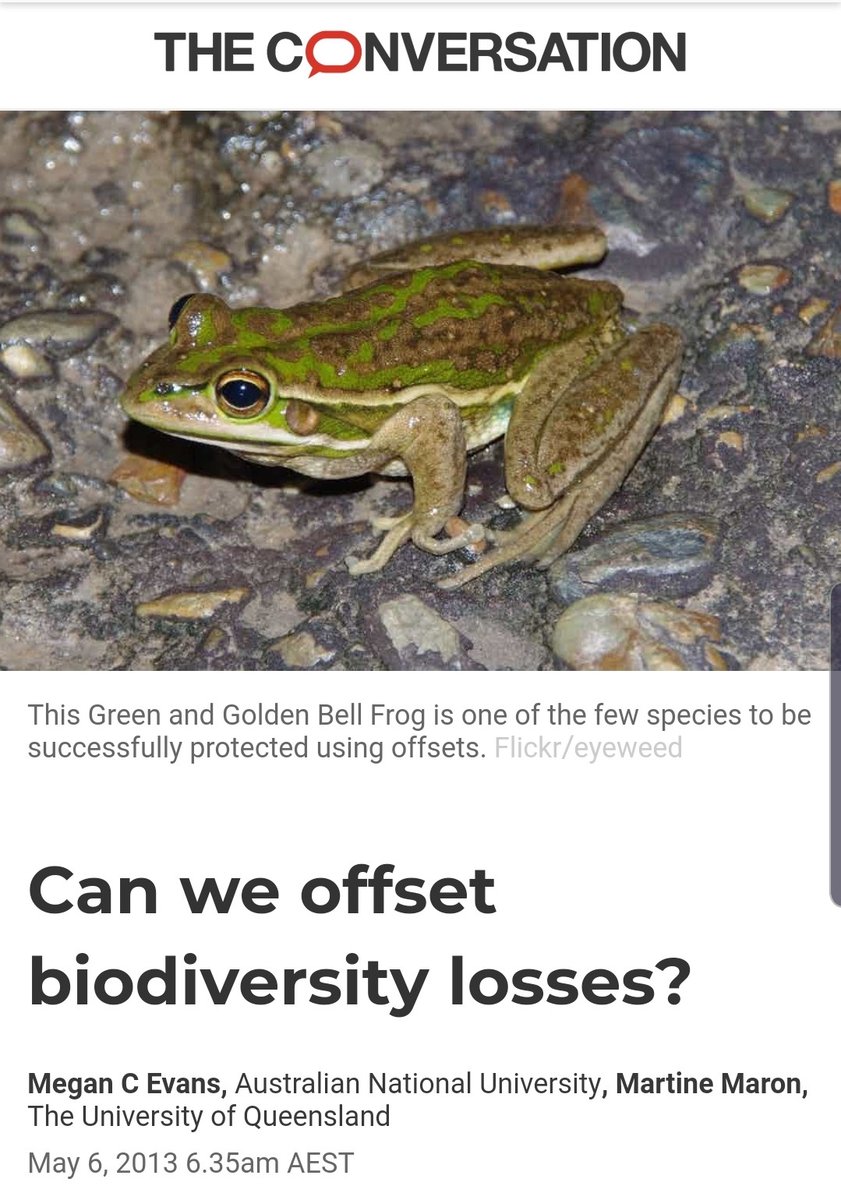This story in @smh describes the upcoming @EDOLawyers challenge on the proposed China First/Galilee Basin #coal mine on @BimbleboxNR , but doesn't say much on the offset (thread) 👇smh.com.au/national/test-… 

@smh @EDOLawyers @BimbleboxNR Back in 2013, @martine_maron and I wrote a piece in @ConversationEDU examining the China First mine’s proposed offset for @BimbleboxNR. In _very_ simplistic terms, the nature refuge is 8000 hectares of reasonably intact native vegetation. theconversation.com/can-we-offset-… 

You can find the project’s Environmental Impact Statement (EIS or EIA), including its biodiversity offset strategy (appendix 26), here: statedevelopment.qld.gov.au/coordinator-ge… As far as I know, this is all still current
On page 26, we find the proposed offset for @BimbleboxNR – the China First/Galilee Coal project will protect nearly 16,000 ha of vegetation to compensate for the loss of 8,000 ha. That sounds ok, right? 2 for 1? Unfortunately, it’s not that simple. 

To work out what benefit an offset will provide, we also need to understand what would happen _in absence_ of the offset. That means, we need to know what would happen to the proposed offset site with 16,000 ha of native vegetation if_ it’s _not_ protected as part of an offset?
(Let's just ignore the fact that pg 39 describes a *nature refuge agreement* as one way that an offset could be legally secured to compensate for impacts on a *nature refuge*: another @ConversationEDU from me in 2011) theconversation.com/no-refuge-when… 

Let’s assume that over the next 20 years (which is the timeline most offset policies in Australia consider), about 1% of that 16,000 ha proposed offset site is lost each year due to clearing (based on long term average clearing rates – source: megancevans.com/wp-content/upl…)
That means that over 20 years, we will lose 3,200 ha of this 16,000 ha site if_ it’s _not_ protected as part of an offset. Meaning the offset benefit is 3,200 ha. Which is a lot less than 8,000 ha.
But isn’t the clearing rate in Queensland is higher than 1% a year? Sure, recently it has (see by @BAlexSimmons sciencedirect.com/science/articl…) especially when you consider younger regrowth vegetation. Yet again with #offsets, it's not so simple.
@BAlexSimmons Much of the clearing that would occur on the 16,000 site (e.g high value regrowth & remnant) _would_require_an_offset_anyway, so we can’t factor that into our calculations. See Path A, from recent work led by @MaseykF nespthreatenedspecies.edu.au/publications-t… 

@BAlexSimmons @MaseykF And also, if we rely on clearing elsewhere as a baseline to judge the benefit of protecting vegetation as an offset, this is a zero sum game – we are still have a total loss of biodiversity over time. 'No net loss' usually means we are at best *maintaining* biodiversity loss 

@naturesustainab @martine_maron Lots of other complexities I could discuss, e.g influence of vege quality on calculations, and whether it's ok to clear a protected area, but that's all for now. /fin
• • •
Missing some Tweet in this thread? You can try to
force a refresh










